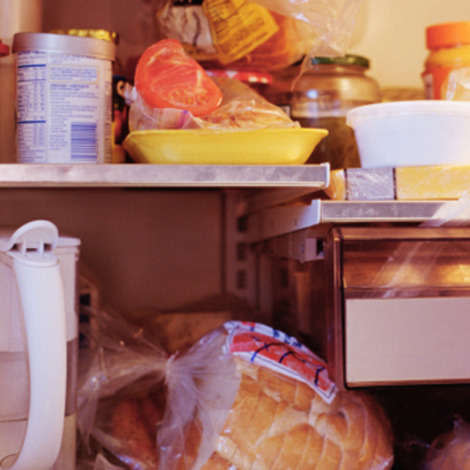Keep Your Food Safe when a Storm Hits

Whether it's a small storm or a major hurricane, use these tips to ensure your family's food supply is protected.
Before the Storm
• Stock up on canned food, bottled water, batteries, and dry ice.
• Group food together in the freezer to help it stay cold longer.
• Freeze any items that you don't need right away such as leftovers, milk, and fresh meat and poultry to keep them at a safe temperature longer.
• Have coolers on hand to keep perishable food cold if the power's out for more than 4 hours.
• Buy or make as much ice as you can store in your freezer to use in the refrigerator or in a cooler if you lose power.
Related: How to Prepare Your Home for an Emergency
If You Lose Power
• Open the refrigerator and freezer doors as little as possible. If you keep the doors closed, a refrigerator will keep food cold for about 4 hours and a full freezer will keep its temperature for about 48 hours (24 hours if half-full).
• If the power's out for an extended period of time, buy dry or block ice to keep the refrigerator and freezer as cold as possible.
• If you lost power for 4 hours or longer, toss all perishables including meat, dairy, leftovers, and cut-up fruit and vegetables (whole produce and condiments are fine).
• When the power is back on, check food in the freezer. If it's hard or icy, it's safe to refreeze and use.
Related: 5 Dangerous Misconceptions About Tornadoes
Or Worse, If You Experience Flooding
• Throw out any food that isn't in a waterproof container if there's any chance that it's come into contact with floodwater. Containers that aren't waterproof include ones with screw-caps, snap lids, pull tops, and crimped caps. Also get rid of cutting boards, plastic utensils, baby bottles, and pacifiers.
• Thoroughly wash all metal pans and ceramic dishes that came in contact with floodwater with hot soapy water and sanitize them by boiling them in clean water or by immersing them for 15 minutes in a solution of 1 tablespoon of unscented, liquid chlorine bleach per gallon of drinking water.
• Use bottled water that hasn't been exposed to floodwaters. If bottled water isn't available, you can boil tap water.
Related: 10 Energy-Saving Tips for Around the House
Most importantly, never taste food to find out if it's safe. When in doubt, throw it out!
Visit the United States Department of Agriculture Food Safety and Information Service (FSIS) for more information on handling food during an emergency. If you have food safety questions, you can Ask Karen, FSIS's virtual representative, 24 hours a day. For up-to-the-minute information, follow FSIS on Twitter.
-Sharon Franke is the director of the kitchen appliances and technology lab of the Good Housekeeping Research Institute.
More from Good Housekeeping:
